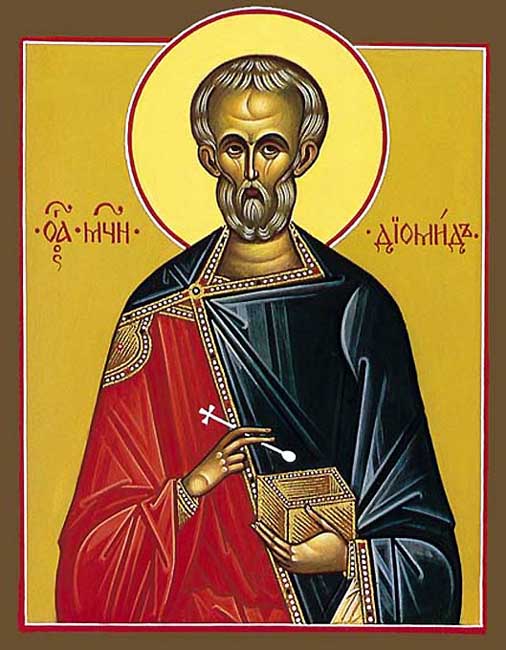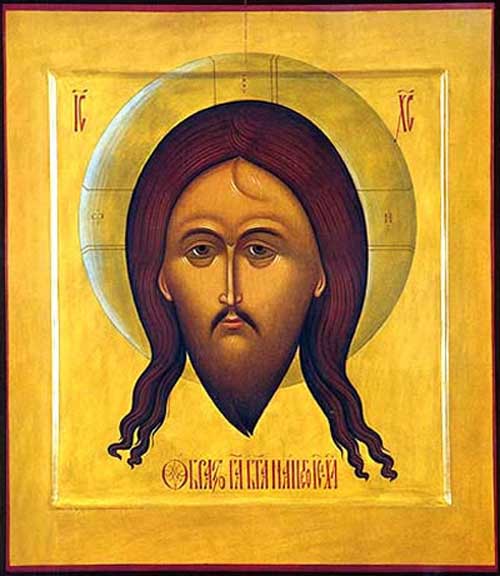Translation of the Icon of our Lord, God and Savior Jesus Christ, the icon not made by human hands, from Edessa to Constantinople(944).
At the time when our Lord preached the
Good News and healed every illness and infirmity of men, there lived
in the city of Edessa on the shore of the Euphrates Prince Abgar who
was completely infected with leprosy. He heard of Christ, the Healer
of every pain and disease and sent an artist, Ananias, to Palestine
with a letter to Christ in which he begged the Lord to come to Edessa
and to cure him of leprosy. In the event that the Lord was unable to
come, the prince ordered Ananias to portray His likeness and to bring
it to him, believing that this likeness would be able to restore his
health. The Lord answered that He was unable to come, for the time of
His passion was approaching took a towel, wiped His face and, on the
towel, His All-pure face was perfectly pictured. The Lord gave this
towel to Ananias with the message that the prince will be healed by
it, but not entirely, and later on, He would send him a messenger who
would erase the remainder of his disease. Receiving the towel, Prince
Abgar kissed it and the leprosy completely fell from his body but a
little of it remained on his face. Later, the Apostle Thaddaeus,
preaching the Gospel, came to Abgar and secretly healed and baptized
him. The prince then destroyed the idols which stood before the gates
of the city and above the gates he placed the towel with the likeness
of Christ attached to wood, framed in a gold frame and adorned with
pearls. Also, the prince wrote beneath the icon on the gates: "O
Christ God, no one will be ashamed who hopes in You." Later, one
of Abgar's great grandsons restored idolatry and the bishop of Edessa
came by night and walled up that icon over the gates. Centuries have
passed since then. During the reign of Emperor Justinian, the Persian
King Chozroes attacked Edessa and the city was in great hardship. It
happened that Eulabius, the Bishop of Edessa, had a vision of the
All-Holy Theotokos who revealed to him the mystery of the sealed wall
and the forgotten icon. The icon was discovered and, by its power,
the Persian army was defeated.
The Holy Martyr Diomedes.
 Diomedes was of prominent birth and a
physician from Tarsus. Healing the people, Diomedes taught them about
the Faith of Christ. Emperor Diocletian ordered him beheaded in
Nicaea in the year 298 A.D. Those who beheaded him and brought his
head to the emperor were blinded and when they returned the head to
the body and prayed, they were made whole again.
Diomedes was of prominent birth and a
physician from Tarsus. Healing the people, Diomedes taught them about
the Faith of Christ. Emperor Diocletian ordered him beheaded in
Nicaea in the year 298 A.D. Those who beheaded him and brought his
head to the emperor were blinded and when they returned the head to
the body and prayed, they were made whole again.
Respectfully Taken From the:
"The Prologue of Ohrid"
by St. Nikolai of Zica, Serbia(Velimirovic)

No comments:
Post a Comment